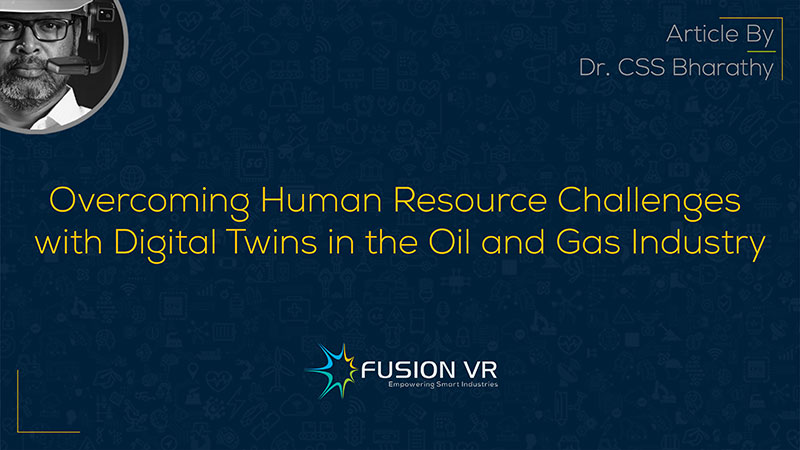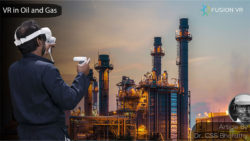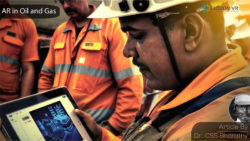An indicator of the growing interest in digital twin technology in oil and gas is reflected in the number of patents that have been filed in the last decade. That number exceeds 500, and they have been from most of the leading companies involved in engineering, manufacturing, automation etc.
Apart from indicating interest in digital twins, it’s also a barometer of the innovation behind the scenes and the potential for commercial benefits using this technology. The rapid adoption of Industry 4.0 technologies which are powering the next industrial revolution, has helped to highlight the importance of digital twins to the movers and shakers of the manufacturing industry.
The continued focus on digitalisation and the evangelisation of its benefits is a huge factor in the adoption of digital twins by the manufacturing and engineering community. The digital twin brings together key Industry 4.0 technologies such as the Industrial Internet of Things (IIoT), Data Analytics, Artificial Intelligence, Virtual Reality, Augmented Reality etc., to deliver the benefits the industry needs.
The advent of digital twin in oil and gas industry has also highlighted the need for greater coordination and collaboration between manufacturers, end users and service providers. Their combined efforts have been pivotal in the growth and development of digital twins we see today.
A digital twin is a computer generated digital proxy of an actual machinery, process, system or facility that is in operation at a facility somewhere in the world. The digital twin is real time and dynamic. There are different types of digital twins depending on the use cases desired by the user. The ability to view, monitor, intervene and improve the performance of a physical twin is by far one of the biggest reasons for the popularity of digital twins.
Digital representation is also popular as it easily engages essential and important stakeholders who will contribute to the improvement of the performance of the asset and enables them to obtain analysis and intelligence for predictive performance management. It is also helping senior leadership to keep a finger on the pulse of critical assets in any part of the world. The implementation and growth of 5G networks are accelerating the adoption and the popularity of digital twins.
Key Advantages of Digital Twins for the Oil and Gas Industry

There are significant benefits arising from the use of digital twin models. The digital twin has become an important driver towards the reduction of operational costs and risks that endanger the financial health of the operating assets. The improved monitoring of assets enables better controls and improved reliability of those assets. Reliable assets also deliver improved safety and environmental performance.
More reliability means less downtime, fewer maintenance interventions, rework and consequently reduced maintenance costs. Data analytics enables the development of better models and also provides crucial insight for introducing design upgrades and next generation models. As the world is gearing towards increased digitalisation, it is important that industry experts look at digital twins to realise their benefits.
General Electric, one of the world’s biggest and most diversified manufacturing companies, says on its website that digital twins have enabled outcomes such as the following
- An increase of 93 – 99.49 % in reliability in less than two years
- A 40% reduction in reactive maintenance
- 75% the lesser time is needed to achieve planned outcomes
- $11 million of production loss was avoided by detecting and preventing failures
These are significant benefits to manufacturing companies and end users of this equipment. Driving costs down provides an undeniable competitive advantage in today’s globalised economies. Several other manufacturers have realised the same benefits as General Electric and are investing in digital twins to remain competitive.
The oil and gas industry is at the forefront of driving growth in many countries. Energy self-sufficiency and energy security are national priorities. The cost of energy is dependent on many factors, while the cost of production can be controlled by deploying the technologies currently available. The entire value chain from upstream to downstream in the oil and gas industry will benefit from the use of digital twins.
The industry makes huge capital investments in its assets. These assets are located where the feedstock is available, and these locations are mostly in remote parts of the world and increasingly in offshore locations. It is not possible to access these assets and ensure they deliver top-quartile performance at all times.
The remoteness of these assets makes it important to monitor these assets closely and build models that deliver critical information to predict performance issues and plan effective interventions. This is another reason why industry executives are leaning towards increased digitalisation and the use of digital twins.
The industry also relies heavily on Original Equipment Manufacturers (OEMs) like GE for delivering various critical equipment for these facilities. They closely collaborate with the oil and gas industry to understand their safety, operational and reliability priorities and help develop solutions such as digital twins to improve performance.
The digital twin provides a virtual and dynamic representation of their equipment. They have wisely realised the value gained from data that is generated from their machinery that can be analysed to learn new things and establish the information needed for continuous improvement. OEMs have now begun to bundle digital twin applications in the oil and gas industry along with their product offerings.
The digital twin is also appealing to the oil and gas industry for its ability to engage experts across various disciplines from different corners of the globe on a single platform. Data analytics and improved visualisation is a key attraction in its adoption. Immersive digital twins using VR and AR provide the opportunity to view and monitor highly realistic digital twins. The digital twin also serves as a single dynamic repository of all information and data related to the equipment.
Actual drawings, dimensions, and part numbers can be obtained from the digital twin. In addition to that, the digital twin also provides an event history on maintenance actions, reliability studies, cost incurred, preventive and predictive maintenance plans, procedures and best practices. Engineers with access to the digital twin can save time in their analysis and decision-making. The intelligent digital twin can also directly interface with the operations and maintenance team to provide recommendations that will improve the operation of the equipment and enable better risk management.
Overcoming Human Resource Challenges with Digital Twins in the Oil and Gas Industry

The oil and gas industry is also facing a human resource challenge. Many of the current experts are older and nearing retirement. The vast experience and knowledge that they have gained would also go away with them.
Young professionals are seeking better and more comfortable career options than venturing out to the oil and gas assets in far-flung areas. The work here is quite demanding and, at the same time, rewarding. The digital twin helps to maintain all records of all interventions by the experts for many years to come.
Their knowledge is institutionalised through the digital twin. Furthermore, they can be brought on board if needed just by providing access to the digital twin, which also brings us to the possibilities of the industrial metaverse and the role of digital twins. The opportunities are endless to collaborate on the metaverse as more and more of us are spending an increased amount of time online.
There is no doubt that the popularity of digital twins in the oil and gas industry is increasing. Innovations in the digital sphere are being rapidly adopted in the energy industry. A clear vision of the benefits of digitalisation, identifying use cases and projects supported by budget allocations along with the empowerment of the employees, will help the oil and gas companies to leapfrog others in the adoption of digital twins.





